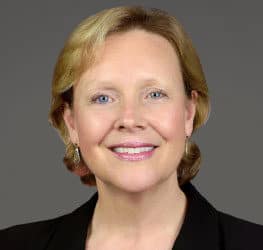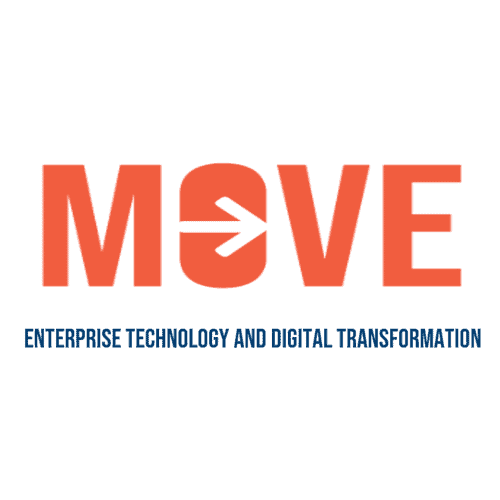C-suite conversations: Vicki Hildebrand, CIO of Blue Cross Blue Shield of MA
This edition of “C-suite Conversations” features Vicki Hildebrand, CIO of Blue Cross Blue Shield of Massachusetts.
After many years in engineering and IT leadership positions in the for-profit sector, and much to her surprise, Vicki was attracted to a federal government opportunity due to the importance of the mission. As CIO of the Department of Transportation, her budget was $3.5 billion. Success in that role eventually led her to the healthcare industry, which she feels is the best place to be if you are passionate about driving transformation.
Key Takeaways
- As a CIO, you must learn to have patience. Change is still hard for many people and many organizations, particularly in the healthcare industry.
- With digital transformation initiatives that no one has ever done before, on time and on budget are not measures that provide a lot of value anymore.
- In IT there is always money being spent on things that are of low value. That is where you can find the budget to fuel innovation.
Q&A with Vicki
Judy Kirby: How did your career in information technology get started?

Vicki Hildebrand: As a student, I always gravitated toward math. My father was an engineer and he encouraged me to try electrical engineering in college. There weren’t very many women in that field then, but I’m a risk-taker, so I did it and I loved it. I had dreams of joining NASA, but by the time I got out of college, NASA was winding down and personal computers were booming, Silicon Valley was going crazy, and I wanted to be part of that.
When I first moved to Silicon Valley, it was really humming and full of people just out of college, so that’s where I started my career. I was an engineer for a long time, and then this IT industry kind of cropped up. I’ll never forget one day getting a message from HR, saying, “You are now in the IT function.”
JK: You have led IT in multiple industries. You spent a long time at HP. Then you were CIO at the U.S. Department of Transportation. From there you became CIO of Blue Cross Blue Shield of Vermont, and now Blue Cross Blue Shield of Massachusetts. Can you talk about those industry transitions?
VH: I was in the for-profit sector for a very long time, and I learned a lot, but after some time and experience, I wanted to do something that was more mission oriented. Then the opportunity to join the Department of Transportation came up. Never in my wildest dreams is that something that I had planned for, but I thought, “Why not interview for it?” After all, the mission of that department is the safety of the American people. And I got the job.
After a few years it became clear that I needed to be closer to home in Vermont. My parents were aging, I was flying to D.C. every Monday, spending four days there, and then flying home every Thursday night, me and Senator Bernie Sanders. Then I got a call from Blue Cross Blue Shield of Vermont, and I thought, “What better place to apply digital transformation capabilities than in healthcare?” Because healthcare, to me, is still behind other industries in the digital space so I was eager to see what I could do to help.
JK: Most organizations struggle with change, and they struggle with digital transformation. What have you learned from your experience that would be helpful to other CIOs?
VH: One of the things I have learned is to have patience. There are enterprises out there that are anxious to pursue digital transformation, while others might eye it suspiciously. “What is this transformation? We take good care of our members today; we’ve got high regulation we have to deal with. Why is it we need to do these things?”
I have been driving this model of equal accountability for our partners and the technology team for speed to value, really driving value to our members. But not everybody embraces that. Change is hard for any company, including one that’s 80-plus years old and successful. Change is hard if there’s no burning platform.
I’m a driver. I’m eager to get things done, but I have learned that it is patience, high EQ, and learning from what’s working and also from what’s not.
JK: What have you accomplished so far with digital transformation at Blue Cross Blue Shield of Massachusetts?
VH: We have a very modern data fabric. I can’t take a lot of credit for it because there was momentum before I started, but I have been a big advocate of it, and I am trying to accelerate it. You know, people are all talking about generative AI, but their data can be awful. You’ve got to start with a solid data foundation. Data is what differentiates us. We have really rich member data, and we’re in a unique position to help them on their health journeys with AI.
Another accomplishment is the CX practice the company is building and we are supporting. Before, customer experience was more about how to resolve survey complaints, now we’re pivoting toward journeys, a “no wrong front door,” and a digital-first approach to things, while ensuring that members still feel a high touch. You don’t want to go so digital that they feel like they’re remote from you.
JK: And what would you say have been the keys to success with those two initiatives?
VH: Changing the accountability. On time and on budget are not measures that provide a lot of value anymore. There is some science and some art to all of these initiatives, and there’s not one person who has ever done any one of these initiatives before. So, why should we know exactly how long it’s going to take and exactly how much money it’s going to cost, and exactly how many resources? We don’t know the answers, and if we take guesses, we will disappoint people 365 days a year.
I’ve created a “two-in-a-box” relationship with our partners. The technology folks are told, and must embrace, that they are equally accountable for the success of our enterprise. We’re trying to create models where the technology leader can finish the sentences of their business partner, and the business partner is learning a ton about technology, and the two of them are operating so quickly and so collaboratively that they’re driving decision-making and progress really fast. We estimate how long things are going to take, and how much money things are going to take. But it’s not a punitive environment, where, if you miss your date, you’re in trouble, because in that situation everybody pads their numbers. So, I’ve tried to change that to, “As fast as possible, drive that minimum value so that we can actually move the enterprise forward, and do it in a collaborative way.”
JK: How do you get your CFO to go along with this practice of not necessarily defining a budget, and a cost scenario that is fluid?
VH: I am a CIO who believes that we have to have an efficiency arm of transformation. It’s one of the first things I did when I walked in the door. I set up an efficiency initiative because there’s always potential savings. There’s always money being spent on things that are of low value. That’s where you find the money to fuel your innovation.
I am not a CIO who keeps going back to the till, asking for more, more, more. I’m a CIO looking for where we are spending money that is not delivering value, and how I can reinvest that in the innovation that we need. So, I have been out there driving efficiency. That means in the workforce and in being brutal with my vendors. If a vendor is not going to work with us on the costs, we’re leaving. Even if they’re strategic, we’re leaving. In this environment where some vendors are asking for 30% upcharges, we can’t do that. It’s not sustainable. I’m always looking to drive efficiencies and I think CFOs appreciate that.
At the Department of Transportation, the biggest splash I made in the government was when a reporter asked me if I was going to take advantage of a new law that added additional funding to IT departments. My response was, “Absolutely not. I have a $3.5 billion budget. Why would I need more money?” And it spread like wildfire across Washington D.C., “CIO, Department of Transportation says she needs no more money.” I even got a little backlash about it. But I had a $3.5 billion budget for a mid-sized department. How could I justify needing more money?
JK: When you came to Blue Cross Blue Shield of Massachusetts and started changing things, you had to bring your team along. How were you able to engage and excite them?
VH: We set up an initiative called MOVE, which stands for Modernize, Optimize, Value, and Empower, and branded it. Then we tried to make sure that we focused on those areas so that people understood what it was we were trying to do and would rally around MOVE.

No transformation initiative is going to be successful just being driven by technology. It has to be enterprise wide. So, I did that to get my team going, and then we used some of those seeds of change to bring our partners along. But we had to focus on expectations and consider that we were not all starting from the same place. I was probably moving too quickly on some things, again, going back to the importance of being patient.
Transformations don’t have an end game. There’s no end state, no “Voila, I’ve arrived.” It’s all about constantly iterating, changing, and reflecting. What are our impediments? What could we do better?
JK: Looking back on your career journey, what advice do you have for technology professionals interested in becoming a CIO one day?
VH: Learn, learn, learn. I had a fabulous boss, who is now the CEO of Xerox. His name is Steve Bandrowczak. I think he now has upwards of 20-plus CIOs that have come out of his organizations. Steve always used to say, “Every day, spend some time learning. Learn your business, learn what’s going on out there in the world, learn new technologies.” To that advice, I would also add, “be a risk-taker.” Just lean into things, go explore, and open doors.
JK: How have you navigated the technology talent shortage, and what advice can you give for hiring in this environment?
VH: We haven’t had a lot of trouble because we’re able to recruit people to the mission of the organization. We’re obviously not going to be the biggest compensators, nor are we the lowest. Healthcare is very complicated, and it doesn’t always serve members as well as it could. There are people out there who really want to help solve that and support our company’s mission. In addition, I’ve been upscaling the organization, and people are reaching out to their colleagues saying, “Be part of our merry band.” I think we’ve got some momentum going here that people are excited about. If you’re passionate about what you’re trying to accomplish, that comes across to people.
JK: You said you are upscaling your organization. Can you talk a little bit about how you’re doing that?
VH: When I arrived here, I inherited a very large PMO. They had years of experience with the waterfall approach, but I knew we needed to adopt the Agile methodology for technology development. I recognized that this would require a significant evolution, starting with our own team. I quickly introduced the mantra “speed to value”, and we took a close look at our processes to identify steps that aren’t necessarily value-add. We were able to eliminate some steps and streamline the approvals process. We also encouraged people and teams to be less risk averse while constantly learning and recognizing what questions to ask. Many of the changes we made are now enabling us to get more hands on keyboards so we are ready when our business partners come to us. Even if it’s not on the fiscal quarter or the year, I want us to be able to work nimbly.
JK: Succession planning is a responsibility for all senior executives. Can you talk a little bit about your approach to succession planning?
VH: I know that at a lot of organizations, technology aptitude is the top of the list, but leadership is top of the list for me. We spend a fair amount of time on training, grooming, and growing people in their leadership skills, and we do have succession plans. It’s part of the discipline that we have. We’re also a little bit more rigorous than other organizations on our performance calibrations. We’re thinking about where this person is going. What do they need to learn? How can we help them improve and develop their skills? I always view it as a real compliment when someone is promoted out from underneath me to do something new, because growing people is such a high priority for us.
JK: The buzzword for the year is generative AI. How is that impacting your organization and the company’s strategy?
VH: We’re certainly incorporating it, but despite the fact that I usually want to be out in front on new technologies, this is one where I don’t want to be the leader. We are doing some proofs of concept with GenAI, but we have to be very careful with people’s personal health information. Security is very high on our list. Right now, we’re seeing generative AI helping us in the back office, inside the firewall. But we’re going to stay very current on the technology, and we’re going to be watching and learning as we go.
JK: Many organizations right now are touting sustainability, but I hear less about it in healthcare. As CIO, are you involved in any strategic initiatives around sustainability?
VH: Yes, sustainability is a priority for us. In fact, we recently won the Social Impact award from sustainableIT.org. We’re always looking for ways to reduce, to automate, and reduce paper, to make sure that we’re using resources efficiently. It goes back to the efficiency I was talking about earlier. We do build sustainability into our initiatives. We ask ourselves, what can we do here that will really help with sustainability goals?
JK: If you hadn’t gone into IT, what other career do you think you were cut out for?

VH: I have always loved business and academia, and I always thought that if I’d pursued a Ph.D. that I might be interested in running a small college or university. The other thing, if I really followed my passion, is that I probably would want to run U.S. Figure Skating. I was a competitive skater as a kid, and I was a coach for many years. Then I transitioned from coaching into judging, and now I’m on the board of U.S. Figure Skating. The popularity of the sport is declining somewhat, and since I am all about transformation, I wanted to join the board and lean in to see if I could bring some of the excitement around U.S. Figure Skating back to viewers.
JK: It doesn’t sound like you have a lot of free time, but when you do, how do you like to spend it?
VH: My problem is that there are a lot of things I love to do, but I have a lot of energy. I am on some boards, and I really enjoy that work. I love being outdoors. I love skiing, hiking, kayaking, and biking, and that’s what saves me on weekends, just getting outside and having decompression time. I also love to cook, and I love to read.
JK: What is a good book you would recommend to others?
VH: I am a very big fan of Mark Schwartz. He is at Amazon now, and before that he was in government at U.S. Citizenship and Immigration Services. That’s how I met him originally, and he is based in Boston now. He really understands modern technology. I just reread his book, A Seat at The Table. I’ve read it many times, and pages are starting to fall out, but every time I read it, I learn something new, and I’m very energized.